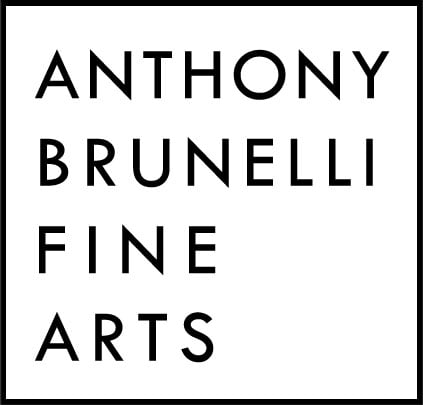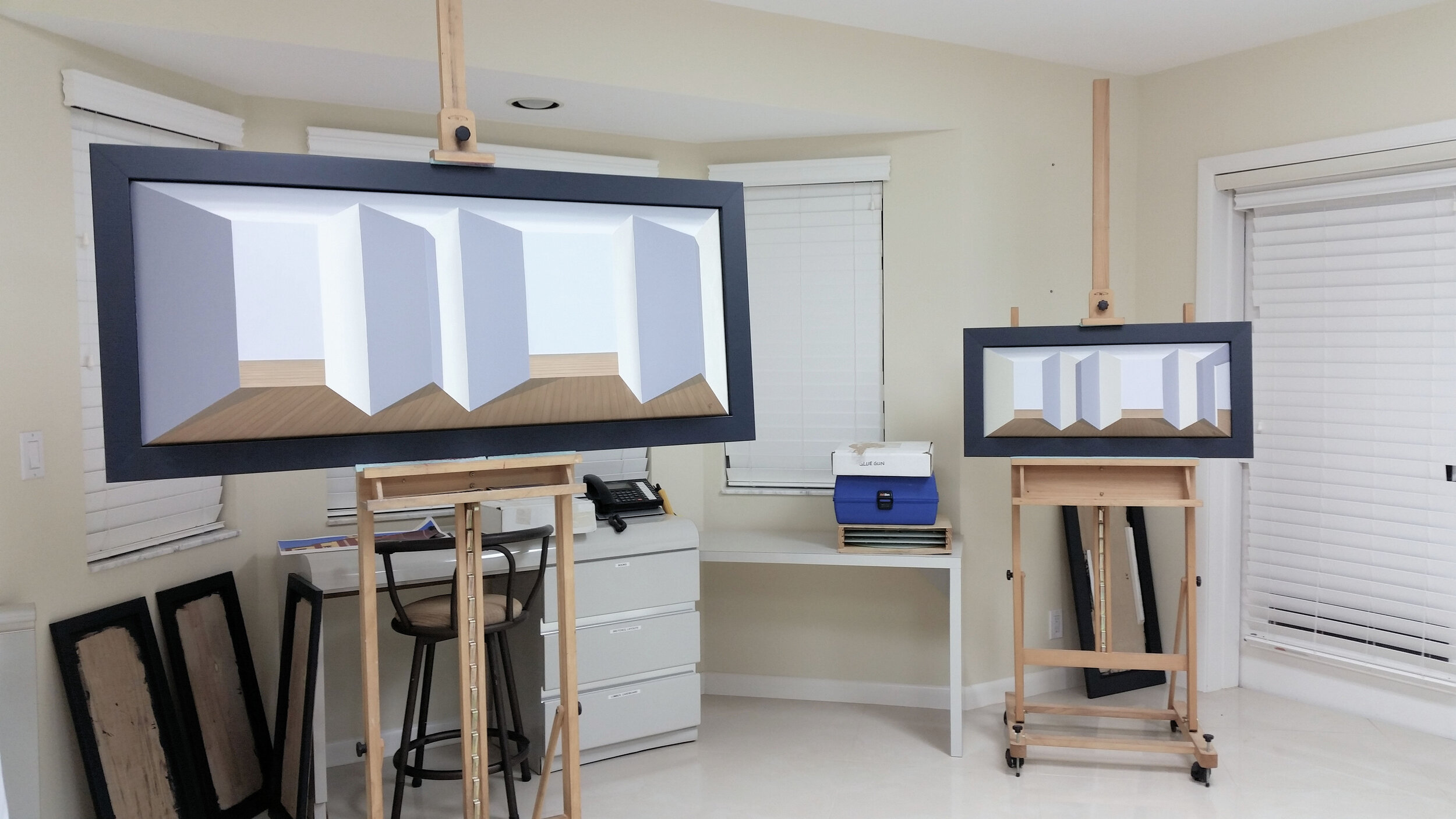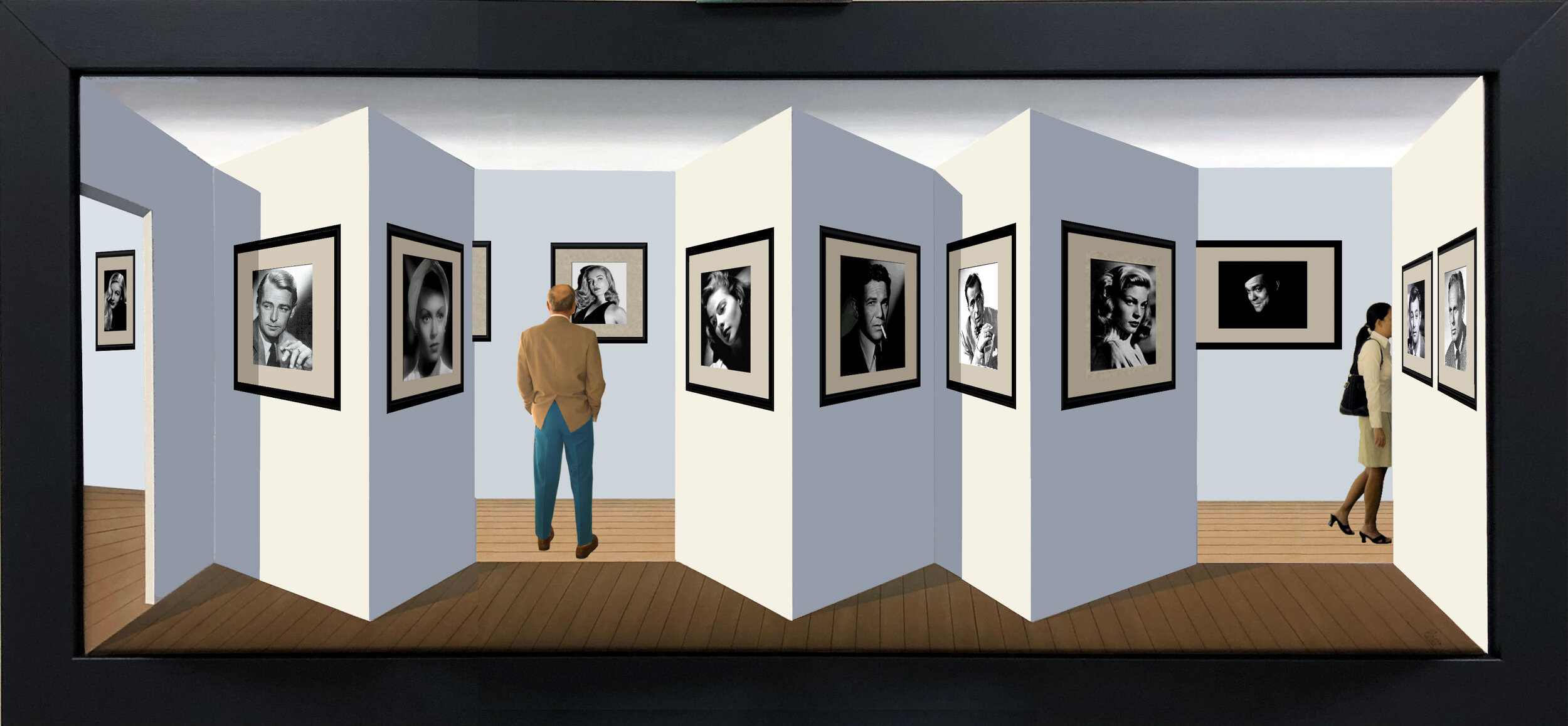Below, artist Peter Roth discusses his artistic journey in our most recent Artist Insights blog.
Artist Peter Roth with his work
Twenty five years ago my wife Betty and I were attending the SOFA show at Navy Pier in Chicago. As we walked down an aisle, I noticed a painting that appeared to dramatically move as we passed. I thought at first that it might have mechanical parts, but it stopped moving when I stopped walking. I was intrigued, got up close, and realized the motion was an illusion. This was my first exposure to reverse perspective.
At that point in my life, I was not a painter and had very little experience in art. I had a degree in chemical engineering and was in the chemical specialties manufacturing business. I had some experience in label design while working with customers, but that was about it. My main hobbies were golf and rehabbing houses. I had always done a lot of carpentry and eventually had gotten into designing and building contemporary furniture.
Upon retirement, I began to seriously investigate reverse perspective. I had some experience with CAD, so I studied the work of Patrick Hughes who invented the process, drew up a couple of designs and began making small cardboard models. Once I fully understood the technique, I made the first plywood structure, which Patrick merely calls a shape. With the shape constructed, about 20 x 45 x 6 in, I decided on a golf theme to complete the surface of the work. Betty and I enrolled in a painting class and I showed the shape to the instructor and said "I want you to show me how to paint this scene on this shape". The whole process took about six months to complete. We hung the piece in the living room and all our friends and guests were "suitably impressed". That’s how it all started.
Betty and I continued our painting classes in Chicago and I turned out a number of flat paintings in realistic style. Later we began studying with Randall Scott, the photorealistic marine painter, at the Lighthouse Center for the Arts in Tequesta Florida, near our winter home. LCA holds an annual show for students and instructors which I decided to enter. The theme was portraits.
Reproduction of the mentioned, “Film Noir,” piece
I decided to return to reverse perspective and do an imaginary photo gallery with studio portraits of my favorite film noir stars hanging on the walls. I made the shape and painted in the background in acrylic. I duplicated the portraits in black and white, in perspective using Genesis heat-set oils. It turned out well, moved like crazy, and won the show. At that point I decided to try to make painting reverse perspective a second career.
My approach to art is very practical. I want to turn out quality work which will please people and be saleable. I have no preconceptions about theory or philosophy. It seems to me that painting, and I suppose all visual art, consists of two factors; imagination and skill in execution. A quality painting certainly requires both. Today, I am shown in five galleries and have sold over two hundred reverse perspective pieces in various forms.









